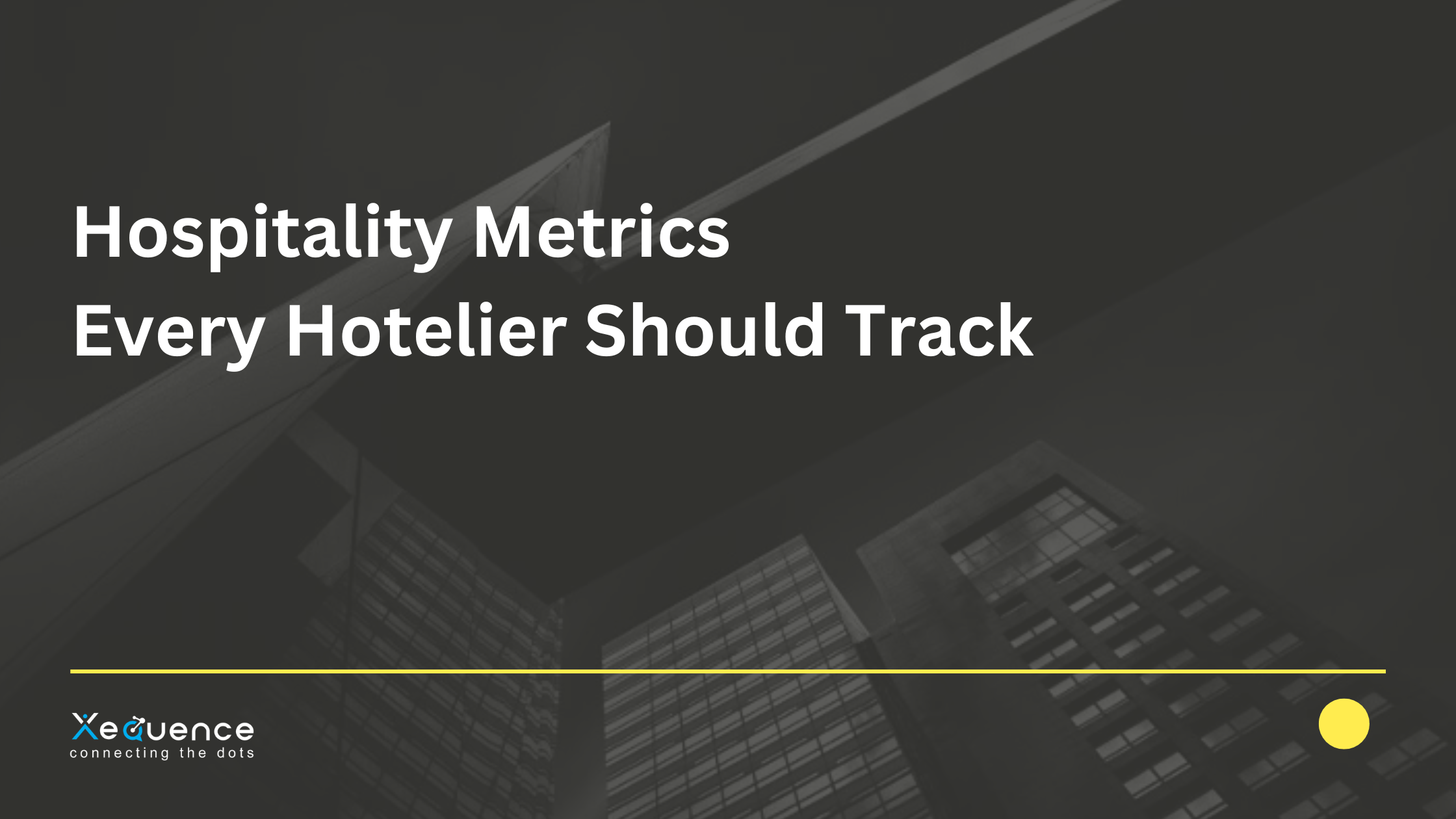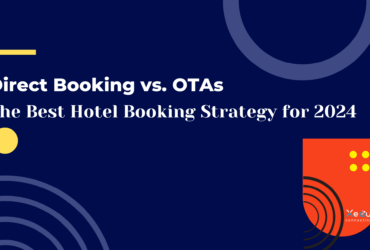Hospitality Metrics Every Hotelier Should Track

- August 7, 2024
- XequenceAI
- Artificial Intelligence, Hotel Marketing, Revenue management
Top Hospitality Metrics Every Hotelier Should Track for Success
Running a hotel requires hard work and ongoing analysis, just like running any other business. Hoteliers need to measure their annual performance against a set of competitive benchmarks in order to stay in business. Understanding what’s working and what isn’t can be gained largely from hotel metrics, or key performance indicators. In this manner, you are able to make wise decisions and alter your trajectory. This blog will discuss key metrics, their measurement methods, and examples such as revenue per available room and occupancy rate. Hotel metrics, also known as key performance indicators, are vital data points that hoteliers rely on to assess their establishment’s performance and success.
What Are Hotel Metrics & Whose Responsibility Are They?
It is dependent upon what is being measured as to whose purview the metric belongs. The Director of Finance, for instance, is in charge of measuring and making improvements to any indicator related to income.
What is the difference between ADR and RevPAR?
RevPAR (revenue per available room) tracks a hotel’s health through a different lens than ADR (Average Daily Rate), which does not take occupancy into consideration. Only the average rate of rooms that are actually sold is displayed by ADR, whereas RevPar is impacted by the quantity of empty rooms. In other words, ADR shows how much money is made from rooms sold during a specific period of time, but RevPAR provides additional details by accounting for the cost of unsold rooms and tying occupancy to show how well the hotel filled its rooms in order to potentially maximize income.
With the exception of fully booked hotels, RevPAR is always lower than ADR. Then, ADR would equal RevPAR if the hotel is fully booked, as every room would be either sold or occupied. Increases in RevPAR are indicative of higher occupancy rates or higher average room rates. The bottom line is that the three metrics we covered together help operators determine pricing and make decisions.\
6 Metrics Every Hotel Should Monitor
Revenue per available room (RevPAR)
Using your income from all bookings combined, this metric is used to examine the average revenue during a given time period. Multiplying the average daily rate by the occupancy rate is required to get this KPI. Another way is to divide the whole amount of money in artificial intelligence travel made each night by the total number of rooms that are available.
Average daily rate (ADR)
The average rate per occupied room can be determined using one of the most important variables. Thus, you can review the daily average money earned for each of your occupied rooms. In order to avoid data that is not representative, ADR never includes vacant rooms.
You can assess a crucial aspect of your hotel’s financial performance with the help of this KPI. In predicting price and marketing, ADR is also quite important. As a result, pricing can be adjusted for seasonal variations in planning and operations.
The calculation is as follows:
ADR = room revenue / number of rooms sold
Occupancy rate
It is possible to monitor the occupancy rate statistics on a daily, weekly, monthly, or yearly basis. There are three types of rooms in this metric: reserved, empty, and total. If services are good, the management can expect hotel reviews best.
The occupancy rate can be calculated by multiplying the number of available rooms by 100 and dividing the number of occupied rooms by the total number. With its continuous data flow, this KPI is crucial for assessing the day-to-day operations of your hotel. Should you observe a pattern of low occupancy on specific days of the week, you may consider implementing promotions to stimulate reservations on these days, or reorganize your personnel if necessary.
The calculation is as follows:
Occupancy rate = total number of occupied rooms / total number of available rooms x 100
Average length of stay (ALOS)
To determine the length of stay of the resident, this computation divides the total number of occupied rooms by the number of bookings. Notably, the number of nights that customers spend at the hotel is taken into account while counting the occupied spaces. The average length of time that guests stay at your hotel is represented by the final score. Since it indicates higher overall spending, a higher score is typically a stronger signal than a lower one.
Using the data to determine prices is one benefit of ALOS. You might raise your lodging charge for brief visits or provide better discounts for longer stays, for instance, if your ALOS is low. A significant factor that influences the hotel’s revenue is the duration of the stay.
The calculation is as follows:
ALOS = total occupied room nights / number of bookings
Market penetration index (MPI)
A crucial statistic for evaluating KPIs is MPI. This demonstrates how your hotel performs in comparison to its industry rivals.
It indicates that you are performing below the market average if your score is less than 100. If your score is more than 100, however, it indicates that you are outperforming the majority of your rivals.
The calculation is as follows:
MPI = Hotel occupancy %/Market occupancy % x 100
RevPAR Room Type Index (ReRTI)
Due to the recent changes in artificial intelligence travel, a new statistic has surfaced to assist revenue managers in determining if the RevPAR is impacted proportionately by the sale of higher-value rooms relative to the inventory of each room type.
A hotel’s ability to benefit or suffer from promotions such as a free room upgrade is determined by ReRTI’s primary objective of analyzing the most profitable room kinds. Based on the amount of rooms you have of that type, if a room type has a score higher than 1, it indicates that it contributes proportionately more than it should. In the event if the room type’s contribution is less than one, as would be expected, the score will be less than 1.
The calculation is as follows:
RevPar Room Type Index = % total RevPAR X number of specific room type/% inventory x number of specific room type.
Conclusion
For hoteliers to ensure maximum performance and growth, tracking important hospitality indicators is crucial. Hotel operators can obtain useful insights into their operations, make well-informed decisions, and execute effective strategies by keeping an eye on occupancy rate, average daily rate, and revenue per available room. Through improved visitor satisfaction, revenue maximization, and comprehension of market trends, these measures help. Achieving long-term success and staying competitive in the ever-changing hospitality sector is made possible for hoteliers by regularly assessing these criteria.
Categories
- Artificial Intelligence (42)
- Business (7)
- Chatbot (39)
- Digital Concierge (9)
- Gen AI (30)
- Guest Experience (25)
- Hotel Management (21)
- Hotel Marketing (18)
- Natural Language Processing (2)
- NLP (1)
- Revenue management (4)
- Technology (13)
- Travel (10)
- Uncategorized (6)
- Whatsapp (2)




























































